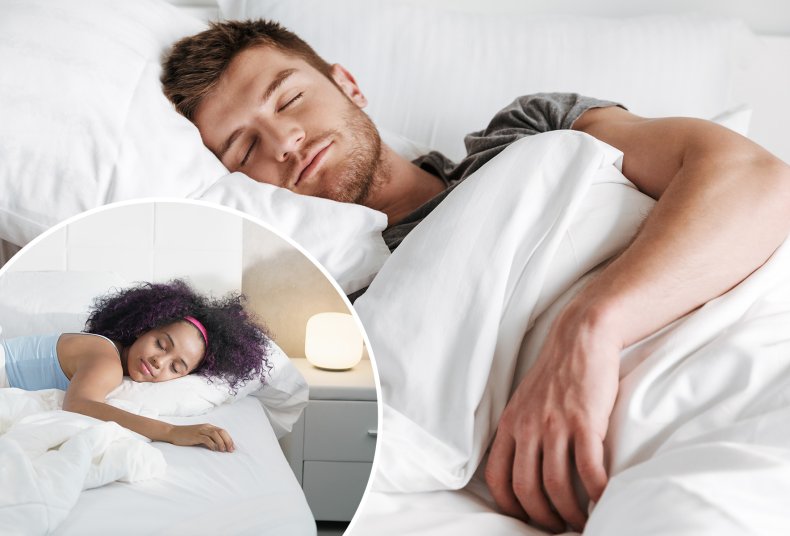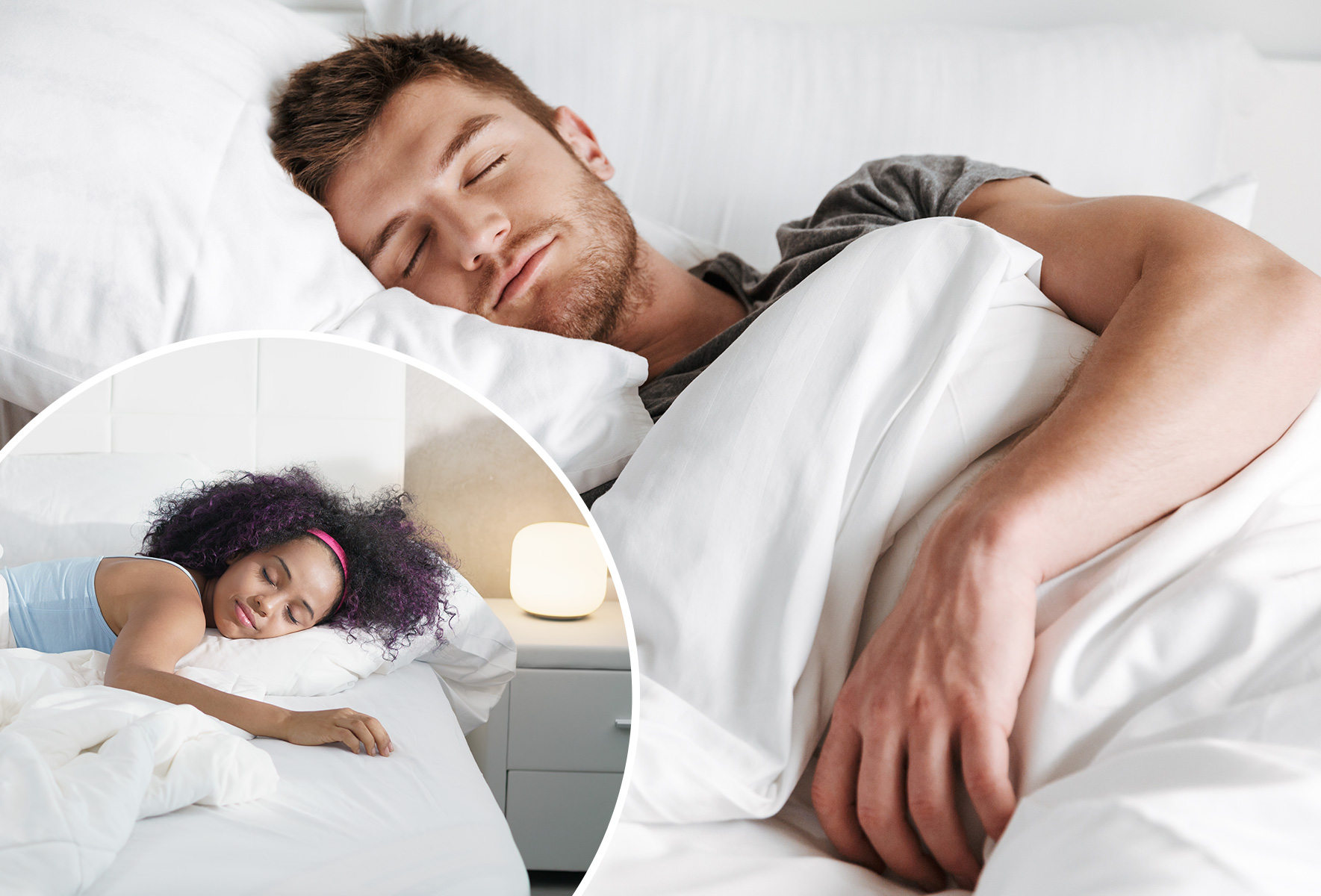There’s no doubt that our quality of sleep plays a big role in the quality of our lives. Sadly, the statistics around how well Americans are sleeping are less than favorable. Nearly 40 percent of adults report falling asleep during the day without meaning to, at least once a month, according to the National Heart, Lung and Blood Institute. The NLHBI also found that an estimated 50 to 70 million Americans have chronic, or ongoing, sleep disorders.
The long-term impact of consistently poor sleep can be pretty severe. Disturbed or irregular sleep often leads to physical and mental health problems like heart disease or anxiety. While it can be difficult to navigate the quality or length of your rest once you fall asleep, it’s possible to control your sleeping position, which can have a significant impact on how well you sleep.

iStock / Getty Images
Chiropractor and counselor Dr. Sarah Jane, who is also the founder of Spinal Energetics, told Newsweek why our sleeping positions play such a crucial role in our sleep quality.
“Sleep plays a significant part in our healing capacity. When we close our eyes and sleep, our nervous systems in their entirety are then given the necessary permission to focus on areas that are not in homeostasis within our body, mind and even our consciousness,” Jane said.
What’s the Worst Position to Sleep In?
The Australian chiropractor was quick to criticize sleeping on the stomach. Jane said that this position can create unwanted tension patterns within the cervical spine that can be related to headaches, insomnia, neck pain, and irritability.
“When we lay on our stomach, we begin to compromise the positioning of our lower and upper spine, and in particular the neck, as we are required to turn our heads to one side,” Jane added.
“This can create bound tension patterns that can be related to feeling ‘wired but tired’, and an inability to cease mental chatter and perfectionist personality traits that can challenge the ability to switch off our thoughts. This position tends to be the least favorable among experts,” Jane said.

Dr. Sarah Jane
The Australian chiropractor added that stomach sleepers should consider sleeping on their side instead. The side sleeping position is deemed the most optimal among experts. It provides a minimized opportunity to compress the upper, middle and lower areas of the spine.
“It is the most beneficial way of finding comfort for the majority of individuals and their own anatomical structure,” Jane said.
However, she added that, in this sleeping position, the legs can become curved into simulating a fetal position. This can then create patterns of disruption that could be related to discomfort in the pelvis and coccyx. This can lead to the side sleeper possibly experiencing feelings of uneasiness or apprehension, and a fight or flight response sensation within our nervous system.
“To prevent this, I’d recommend placing a pillow between the knees. This then creates an opportunity for ideal spinal alignment,” Jane said.
Sleeping on your back is neither the most ideal nor the worst position to adopt, but it can be a common sleeping habit all the same. For Jane, the problem with sleeping on your back is that it can minimize the natural curvature in an individual’s spine, which can begin to straighten their lower back.
“By being on our backs, although we are laying in a neutral position, we could be minimizing the natural curvatures in our spine, and the lower back can begin to straighten as opposed to curving in an optimal lordotic [an abnormal inward curvature of the lumbar spine] way,” Jane added.
“As a result, we can experience physical lumbar discomfort in the lower area of the spine and back, gut health disruption, and possibly feeling unsupported and insecure in the external aspects of life,” she explained.
To remedy this, Jane said that back sleepers should place a pillow underneath their legs. This can restore the essential lordotic curvature of the lumbar spine, creating ease in the body.

Helen O’Leary
London-based chartered physiotherapist Helen O’Leary agreed with Jane. She said that sleeping on your front can lead to people struggling with the range of movement in their necks. She added that the extension you get in your back from this position can make you feel very stiff after waking up, and in desperate need of a morning yoga session.
“You can have lots of adjuncts but, if you are a sleeper who moves around a lot, they will fly out. There are things that can help you when you are in pain in any position, like placing a pillow between your legs, being more upright, and using better-quality pillows,” O’Leary said.
“Having said all of that, getting sleep is the most important thing. So, if that means on the floor, on your stomach, side, front, back, I’m sort of all for it,” she added.
Psychiatrist and sleep specialist Chester Wu also spoke against stomach sleeping. The Houston-based Stanford University graduate told Newsweek: “Stomach sleeping puts strain on your neck, in order to breathe, you need to turn your head to one side, which can put a strain on the neck and spine, potentially causing pain and discomfort. This can cause or exacerbate lower back pain.
“That can then result in impaired breathing, because lying on your stomach can restrict your diaphragm’s movement, making deep breathing more difficult,” he added.
Wu said that, even for cosmetic reasons, stomach sleeping is a big no-no. It can lead to skin issues like acne and even early wrinkling, due to the face being in close contact with the pillow for extended periods of time.
Is there a health issue that’s worrying you? Let us know via health@newsweek.com. We can ask experts for advice, and your story could be featured on Newsweek.










